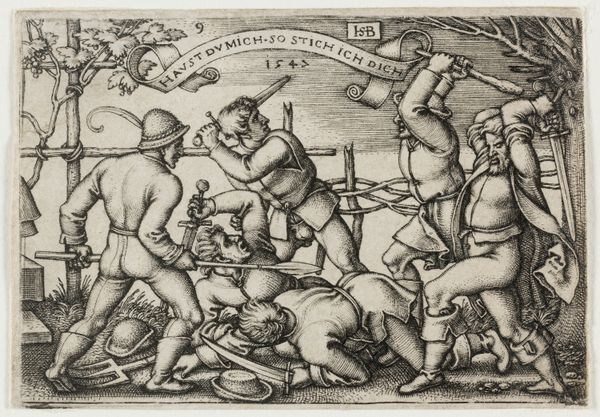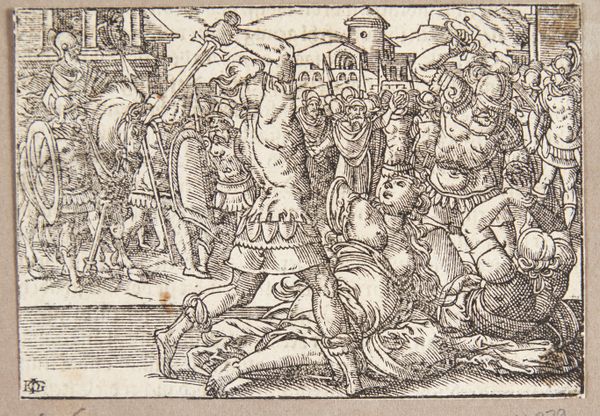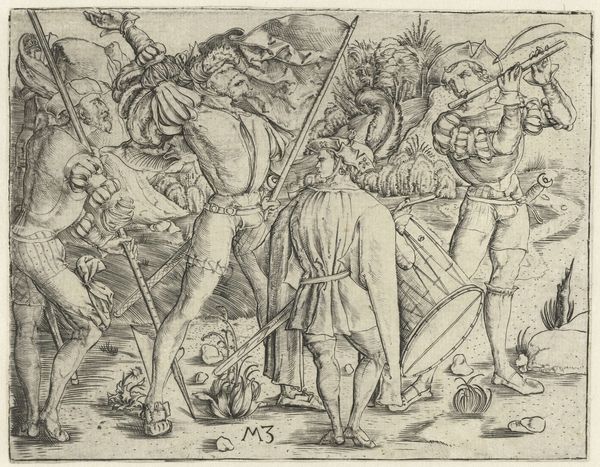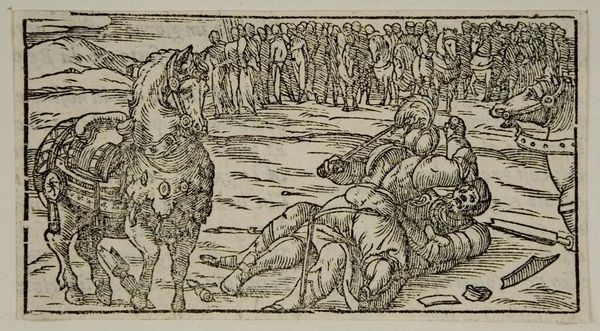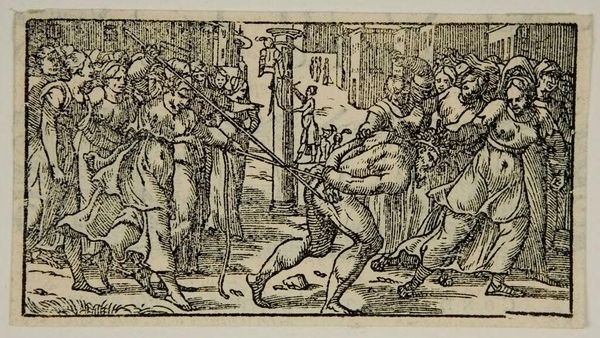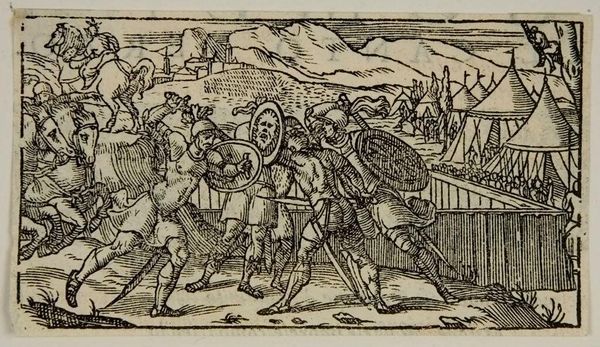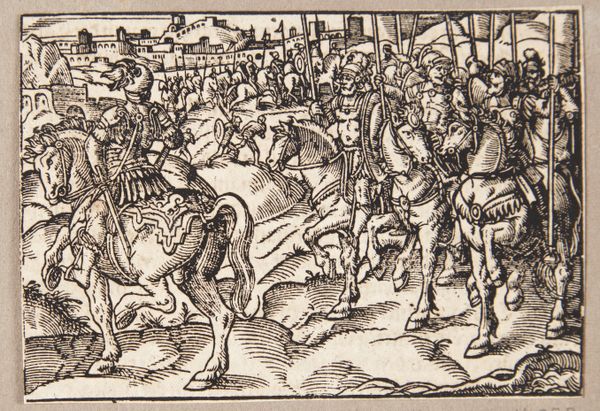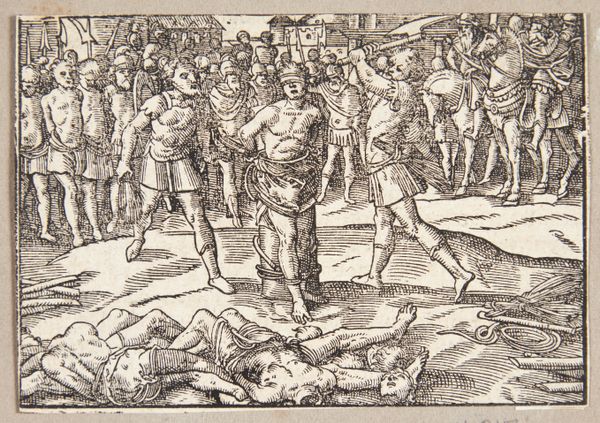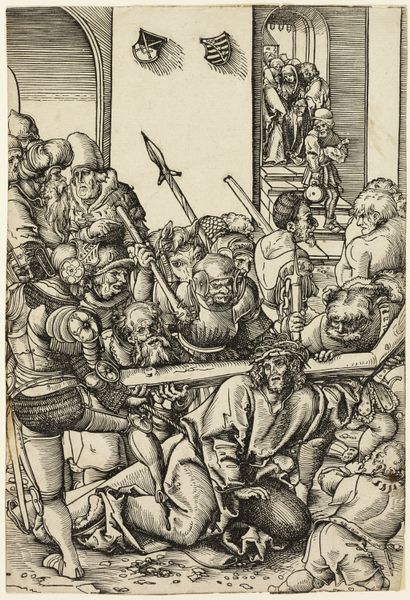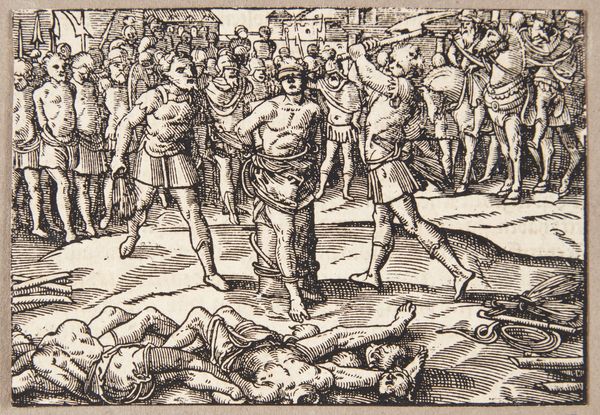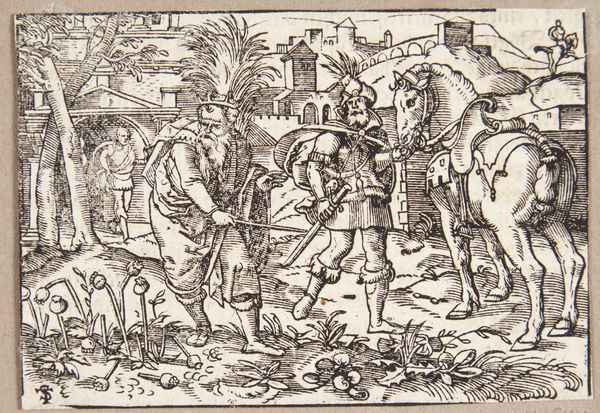
drawing, print, ink, engraving
#
drawing
#
medieval
# print
#
figuration
#
ink
#
history-painting
#
engraving
Dimensions: height 27 mm, width mm
Copyright: Rijks Museum: Open Domain
Editor: We are looking at a 17th-century print called "Christ Carrying the Cross" by an anonymous artist. It's an engraving, made with ink on paper. The composition feels very compressed, almost claustrophobic, due to the density of the linework. What visual elements strike you most? Curator: The use of line, without question, is primary. Observe how the artist employed hatching and cross-hatching to create areas of shadow and depth. Notice how the density of the lines seems to intensify the feeling of weight, both literal – the weight of the cross – and emotional – the burden Christ carries. The formal relationship between the stark black lines and the negative space of the paper establishes the artwork’s thematic structure. How do you interpret the relationship between the figure of Christ and the other figures depicted? Editor: Well, Christ is centrally placed but surrounded and seems almost overwhelmed. It’s as if the darkness around him is closing in. The contrast between Christ's relative stillness and the dynamic lines surrounding him also enhances that feeling of confinement. Curator: Precisely. Now, consider the overall structure. Is this linear style characteristic of 17th-century engravings? The composition emphasizes the corporeal forms and intensifies the emotional gravitas of the scene, making it particularly resonant. How does the medium influence your interpretation of the theme? Editor: Because it is a print, I think of the function: It's meant to be reproduced. This would have circulated widely. The simplified forms are also visually impactful in the print medium. This work is an exercise in conveying complex narratives with limited means. I see now that its emotional resonance is intimately linked to its visual presentation and materiality. Curator: Indeed. Considering the medium, and observing the composition, can provide insights into not just the subject, but also its purpose and the culture that shaped it. A compelling example of form mirroring content.
Comments
No comments
Be the first to comment and join the conversation on the ultimate creative platform.
